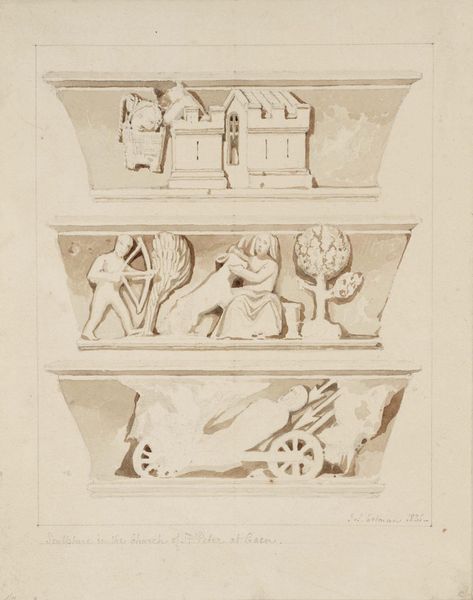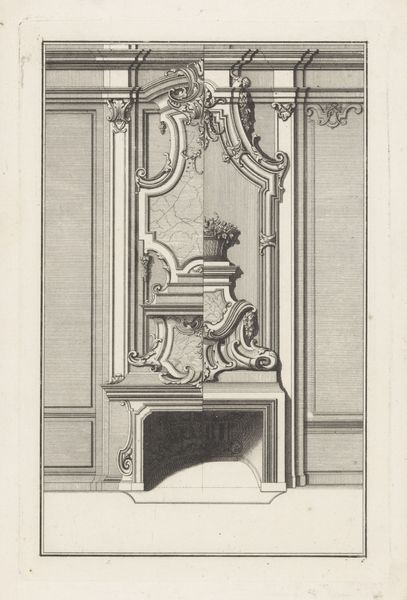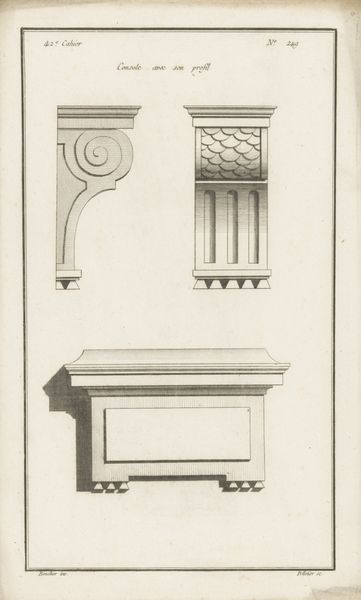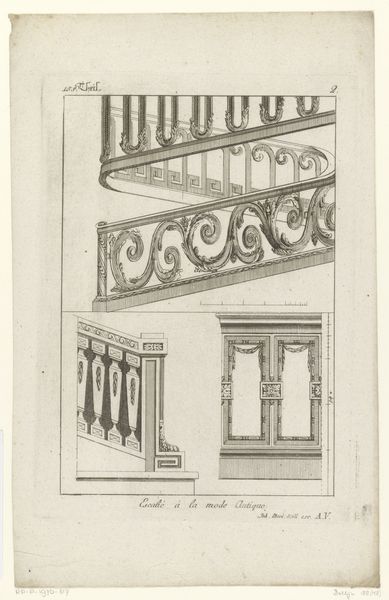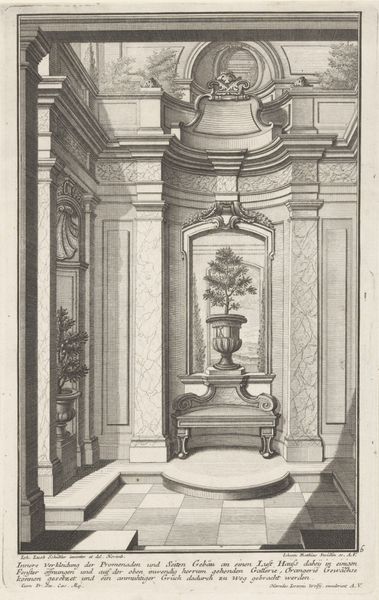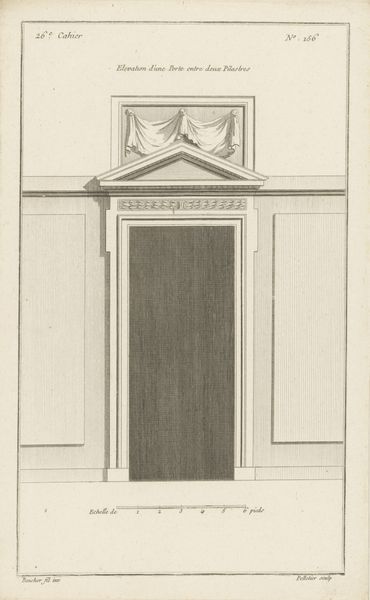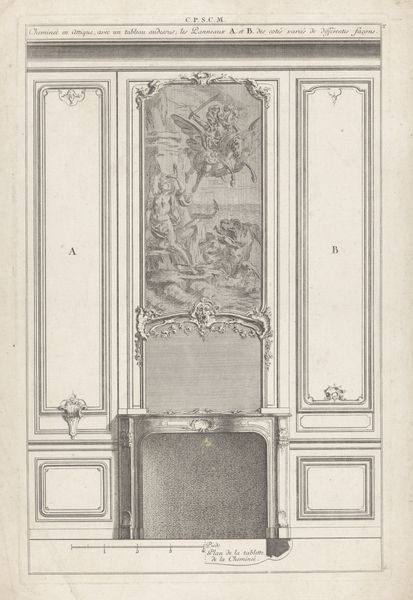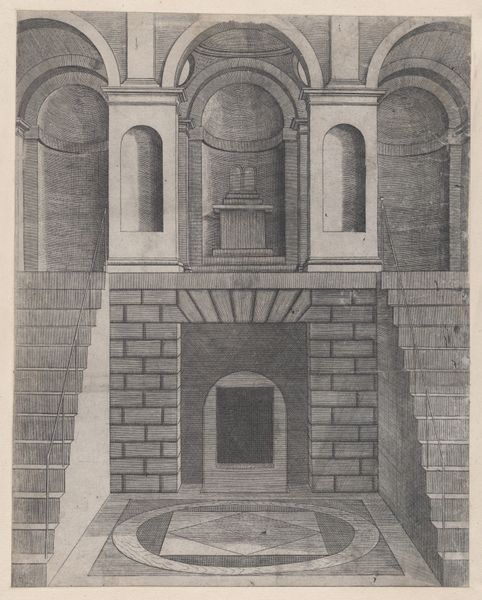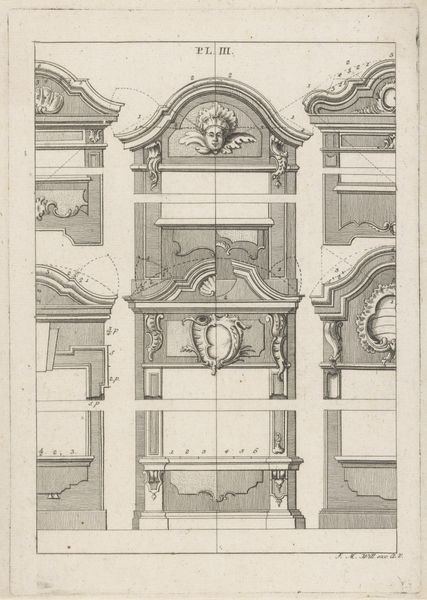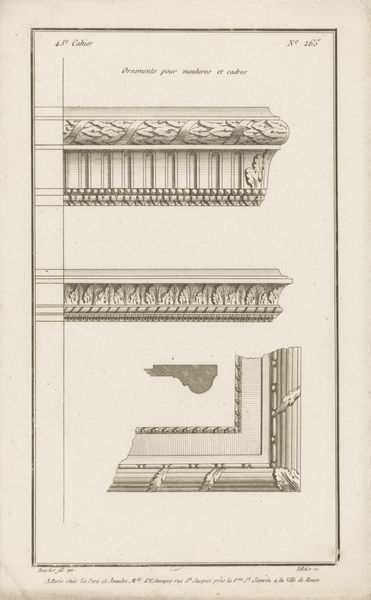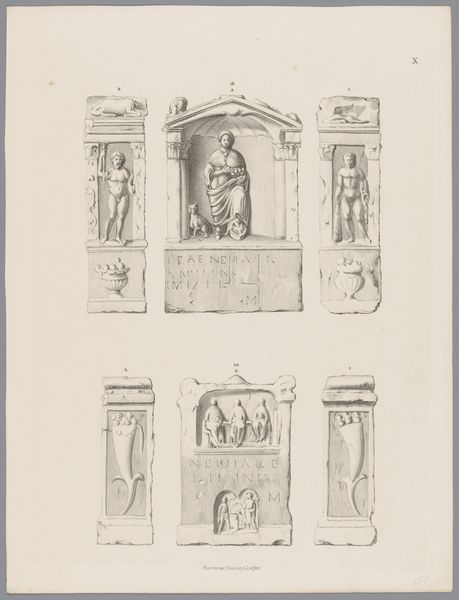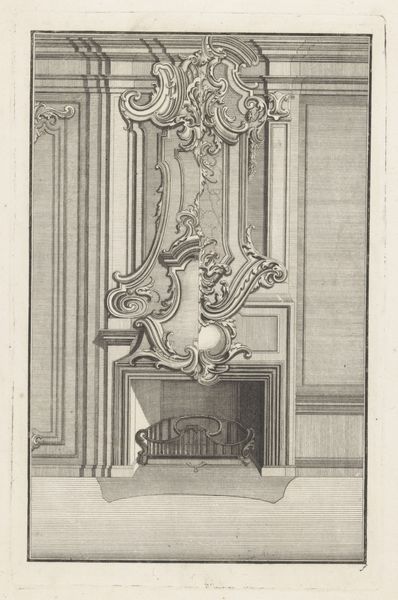
The Roman antiquities, t. 4, Plate LV. Vista of some of the great parts of the first order of the seraglio of the fairs `manufactured by Domitian.
0:00
0:00
drawing, print, graphite, engraving, architecture
#
drawing
# print
#
romanesque
#
geometric
#
ancient-mediterranean
#
graphite
#
history-painting
#
academic-art
#
graphite
#
engraving
#
architecture
Copyright: Public domain
Curator: This is a plate, an engraving in fact, from Giovanni Battista Piranesi's *Roman Antiquities*, depicting elements of ancient Roman architecture. Its stark lines and careful rendering offer a certain structural beauty, don’t you think? Editor: It’s quite detailed! I’m immediately struck by the contrast between the meticulously rendered architectural components and the more gestural depictions of the damaged stone. What aspects of the composition stand out to you? Curator: Observe how Piranesi uses contrasting textures—smooth versus rough—to differentiate between the idealised structure and the ravages of time. See how the regular, repeating lines emphasize geometric shapes. Consider what this communicates about the work itself, as distinct from its role as an archaeological document. What about its use of perspective? Editor: The almost scientific precision of the orthogonal projections beside the ruins. The geometric quality emphasizes the contrast and the idea of studying the ruins analytically. What does that tension suggest? Curator: Precisely. It creates a layered reading. One is historical: this *was*. The other is artistic: this *is*. Piranesi has transformed documentation into art, not through the subject matter but through his handling of line, texture, and spatial relationships, the *forma*. What more could we say about the interplay between darkness and light? Editor: So it’s not just about *what* is depicted, but *how* it's depicted? It makes you think about what elements an artwork must contain. Curator: Yes, a good question indeed. It asks what, for instance, remains timeless between architectural and artistic achievement.
Comments
No comments
Be the first to comment and join the conversation on the ultimate creative platform.

